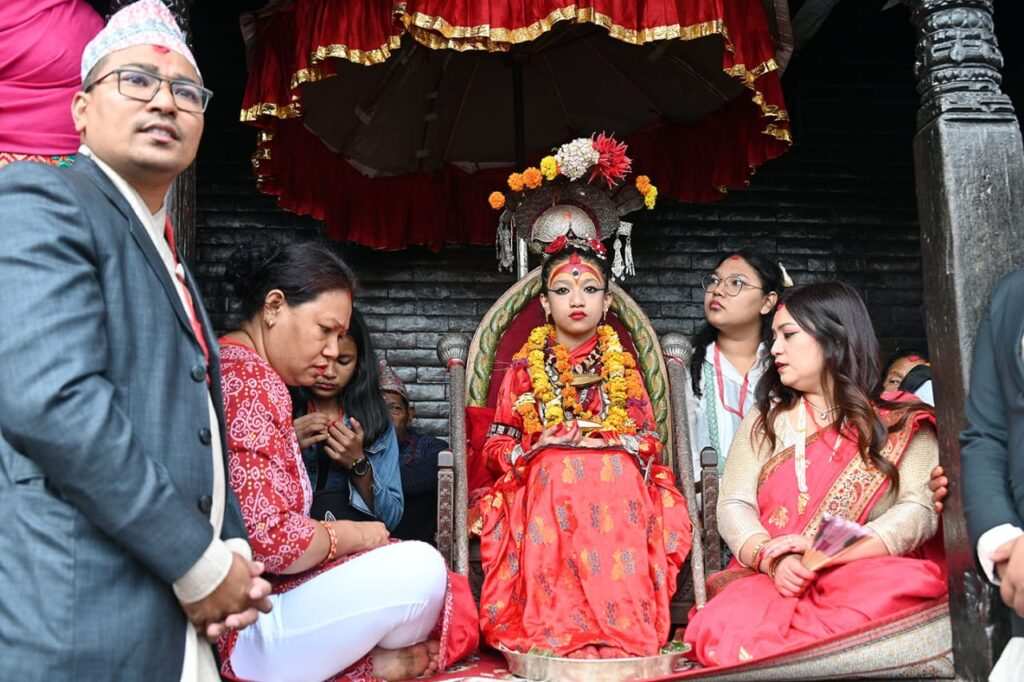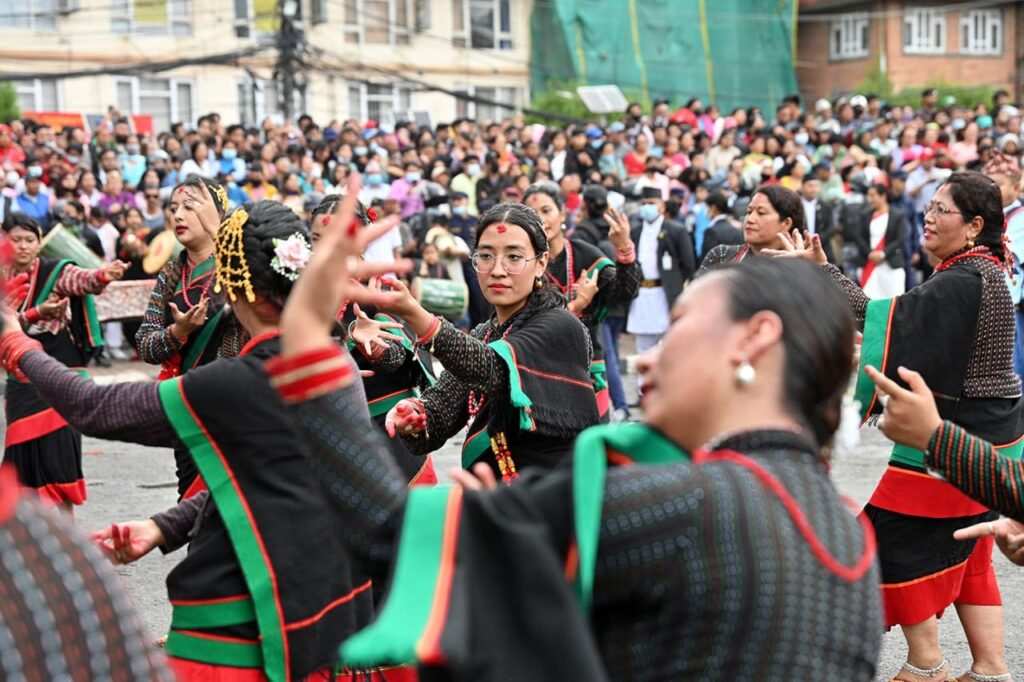Ancient Traditions Come Alive in the Capital
Kathmandu, Nepal Today, thousands of people gathered in Jawalakhel, Lalitpur, to celebrate one of Nepal’s most iconic and historic festivals Bhoto Jatra. This unique event is the final and most important part of the Rato Machindranath Jatra, a month-long chariot procession held to honor the god of rain and good harvest. The streets were filled with excitement, music, and prayers as people of all ages came together to witness this centuries-old tradition.
Bhoto Jatra is not just a celebration it is a reflection of Nepal’s deep-rooted cultural identity and spiritual unity. The event brings together both Hindu and Buddhist communities, showcasing Nepal’s rich diversity and harmony.

The Story Behind the Sacred Vest
The main ritual of Bhoto Jatra is the public display of a sacred jewel-studded vest, known as the “bhoto”, from the high chariot of Rato Machindranath. This is the most awaited moment of the festival. Four priests climb onto the chariot and hold the vest high in all four directions for the public to see. The tradition goes back hundreds of years and is based on a fascinating legend.
According to the story, a farmer once received the valuable vest from the rain god Machindranath as a reward for curing his illness. However, the vest was lost and later found by someone else. Since then, the vest has been kept by the community and shown during Bhoto Jatra every year. If the original owner ever comes to claim it with proof, the vest will be returned. Until then, it remains a symbol of faith and mystery.
Massive Public Participation and High-Level Attendance
Like every year, today’s event was attended by high-ranking officials, including the President of Nepal, ministers, cultural leaders, and dignitaries. Security was tight but respectful, allowing devotees and tourists to enjoy the spiritual atmosphere.
People lined up early in the morning to get the best views. Many wore traditional Newari attire, while others brought offerings and candles. The event was full of cultural music, drums, flutes, and dances, keeping the spirit of the day alive.
Local food vendors also set up stalls selling popular snacks like sel roti, bara, and juju dhau, making the festival feel even more festive.

Rato Machindranath: The God of Rain and Harvest
Rato Machindranath is believed to be the protector of crops and rain, especially important in a country like Nepal that relies heavily on agriculture. Farmers pray to him for timely rains and a good harvest. The chariot festival is performed with the hope of pleasing the god and ensuring peace, prosperity, and rainfall.
For half of the year, devotees keep the idol of Rato Machchhindranath in Bungamati, a small town in Lalitpur. During the remaining months, they move it to Patan, where the grand chariot festival winds through the city’s historic streets. The journey reaches its finale at Jawalakhel with the Bhoto Jatra, a centuries-old tradition in which they publicly display a jewel-studded vest from the chariot of Rato Machchhindranath. This festival concludes the longest chariot procession in the Kathmandu Valley and remains deeply rooted in local legend and spirituality.

A Symbol of Harmony and Community
One of the most beautiful things about Bhoto Jatra is the way it brings people together. Both Buddhists and Hindus celebrate this festival, demonstrating how Nepal’s spiritual traditions intertwine with mutual respect and shared joy. The community actively participates in every aspect—pulling the chariot, playing instruments, and organizing rituals—making it a truly collective celebration.
The involvement of Guthi Sansthan (a traditional social organization) plays a huge role in organizing the event smoothly. Volunteers, local elders, and youth all work together to preserve the cultural value of the festival.
Keeping Culture Alive in Modern Times
Even in today’s fast-moving world, Bhoto Jatra continues to thrive as an important cultural event. Despite the rise of technology, modernization, and busy lifestyles, this festival reminds people of their roots. Young people are encouraged to learn about the history and meaning of Bhoto Jatra so that it can be passed down to future generations. festival news
Schools and colleges often take students on trips to witness the event and understand its spiritual and historical importance. Foreign tourists are also seen every year, taking photos, asking questions, and showing great interest in the unique customs of Nepal.
The Festival Ends, but the Spirit Lives On
As the sun set today over Jawalakhel, the sounds of drums slowly faded. The crowd started to leave, smiling and satisfied after witnessing yet another beautiful Bhoto Jatra. The chariot of Rato Machindranath will now be taken back to Bungamati, marking the official end of this year’s festival.
But the memories and blessings from this celebration will stay with the people throughout the year — until Rato Machindranath returns again.

